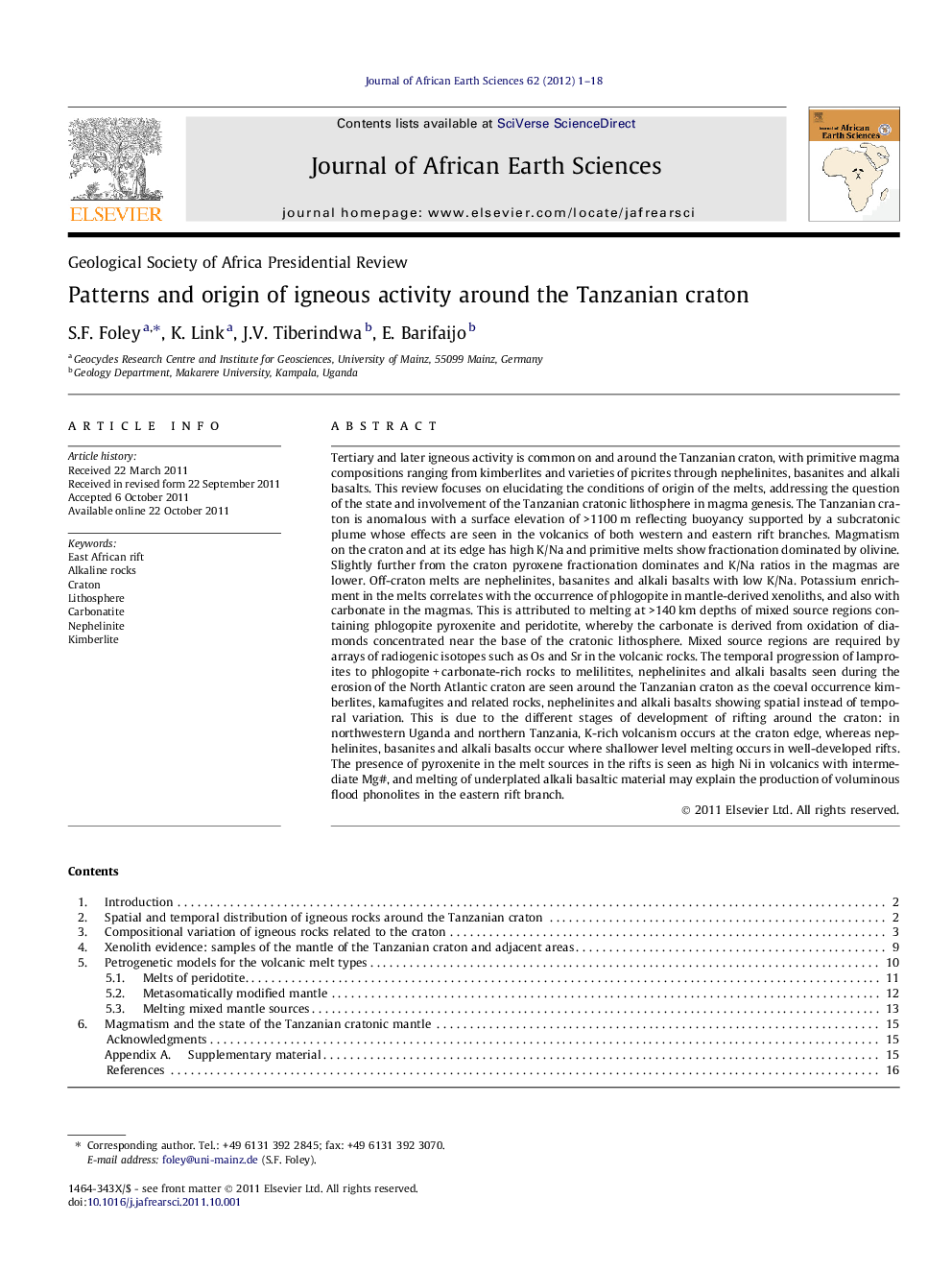| کد مقاله | کد نشریه | سال انتشار | مقاله انگلیسی | نسخه تمام متن |
|---|---|---|---|---|
| 4729102 | 1356502 | 2012 | 18 صفحه PDF | دانلود رایگان |

Tertiary and later igneous activity is common on and around the Tanzanian craton, with primitive magma compositions ranging from kimberlites and varieties of picrites through nephelinites, basanites and alkali basalts. This review focuses on elucidating the conditions of origin of the melts, addressing the question of the state and involvement of the Tanzanian cratonic lithosphere in magma genesis. The Tanzanian craton is anomalous with a surface elevation of >1100 m reflecting buoyancy supported by a subcratonic plume whose effects are seen in the volcanics of both western and eastern rift branches. Magmatism on the craton and at its edge has high K/Na and primitive melts show fractionation dominated by olivine. Slightly further from the craton pyroxene fractionation dominates and K/Na ratios in the magmas are lower. Off-craton melts are nephelinites, basanites and alkali basalts with low K/Na. Potassium enrichment in the melts correlates with the occurrence of phlogopite in mantle-derived xenoliths, and also with carbonate in the magmas. This is attributed to melting at >140 km depths of mixed source regions containing phlogopite pyroxenite and peridotite, whereby the carbonate is derived from oxidation of diamonds concentrated near the base of the cratonic lithosphere. Mixed source regions are required by arrays of radiogenic isotopes such as Os and Sr in the volcanic rocks. The temporal progression of lamproites to phlogopite + carbonate-rich rocks to melilitites, nephelinites and alkali basalts seen during the erosion of the North Atlantic craton are seen around the Tanzanian craton as the coeval occurrence kimberlites, kamafugites and related rocks, nephelinites and alkali basalts showing spatial instead of temporal variation. This is due to the different stages of development of rifting around the craton: in northwestern Uganda and northern Tanzania, K-rich volcanism occurs at the craton edge, whereas nephelinites, basanites and alkali basalts occur where shallower level melting occurs in well-developed rifts. The presence of pyroxenite in the melt sources in the rifts is seen as high Ni in volcanics with intermediate Mg#, and melting of underplated alkali basaltic material may explain the production of voluminous flood phonolites in the eastern rift branch.
Journal: Journal of African Earth Sciences - Volume 62, Issue 1, January 2012, Pages 1–18